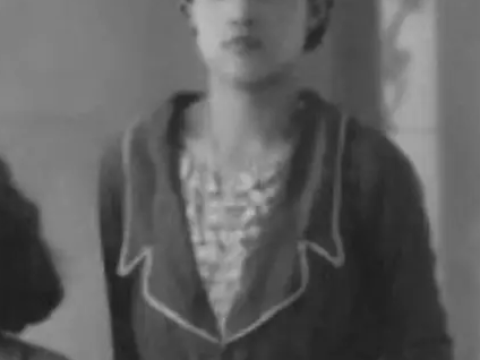A short biography of the Spanish anarchist Francesca Saperas.

Francesca Saperas Miro was born on February 12, 1851 in Barcelona. She was a seamstress by profession. In 1869 she became the companion of anarchist shoemaker Martin Borras Jover, the first director of the anarchist paper Tierra y Libertad. Borras had been converted to anarchist communism from collectivism after a meeting with Malatesta. In 1889, in solidarity with striking workers in Germany, she participated in organizing a big rally in the Plaza Cataluña that never took because the police arrested all the organisers.
It was Francesca who very carefully and prudently delivered copies of Tierra y Libertad to the homes of subscribers. She and her daughters Salud and Maria made the family home a haven for persecuted anarchists.
In September 1893 the anarchist Paulino Pallas attempted to General Martinez Campos in retaliation for the latter’s crushing of the Jerez insurrection of 1890, the subsequent garrotting of four anarchists, and the imprisonment of many others. In the roundup of anarchists after the attentats, the house of Francesca and Martin was surrounded by the police, but Martin evaded arrest by escaping through an underground passage. However, later that night he returned home and was apprehended. He was imprisoned in the Modelo prison. He was deeply concerned that he should be accused of any complicity in the attentats, and a bout of deafness left him unable to answer questions and defend himself. He decided to kill himself and wrote a farewell letter to Francesca. She managed to secretly gain entrance to the prison, where Martin died in her arms on 9th May 1894.
In 1895 Francesca was linked with the anarchist communist magazine La Nueva Idea (four issues of which appeared starting November that year and was edited by Luis Mas. With Teresa Claramunt and others she signed a Women’s Manifesto which appeared in the magazine Bandera Social.
Francesca established a relationship with the anarchist Tomas Ascheri Fossatti. After the Corpus Christi bombing in Barcelona in 1897, which was most likely carried out by a provocateur, Tomas and other anarchists were horrendously tortured and forced to admit involvement. He was executed with four other anarchists in the moat of the Montjuich fortress. Francesca, who had lived in free union with Tomas, was forced to marry him before his execution after she was told that if she did not comply, her daughters would be taken from her and put in a convent. The same happened to her daughter Salud, who was forced to marry her companion Luis Mas, who was also executed.
Francesca and Salud spent a year in prison where they were both tortured. In 1897 they were exiled to France and moved to Marseilles. They were forced to sell all their possessions to pay for the journey and the large number of police that accompanied them to the border!
Francesca was actively involved in the international campaign against the Montjuich trials and atrocities. She lived with the anarchist Francisco Callis, who had been driven into a state of mental breakdown by the torturers of Montjuich. Unable to overcome his suffering, he threw himself out of a window. In 1899 she returned to Spain to take part in a meeting at Tarragona which demanded a review of the Montjuich trials.
Francesca subsequently moved to Buenos Aires in Argentina between 1912 and 1914, then in the United States and finally in Mexico between 1919 and 1923 with Salud.
In 1923 she returned to Barcelona where she shared a house with Teresa Claramunt. In the 1920s she showed signs of an increasing paralysis. As a result of her failing health a committee was set up in 1929 to provide aid to her.
She died on August 21st 1933 in Barcelona. Her funeral was attended by many of the anarchist old guard. She became the archetype of the anarchist woman who suffered so much for her ideas, but yet endured.
Nick Heath
Sources:
http://militants-anarchistes.info/spip.php?article5479
http://www.estelnegre.org/documents/saperas/saperas.html






Comments